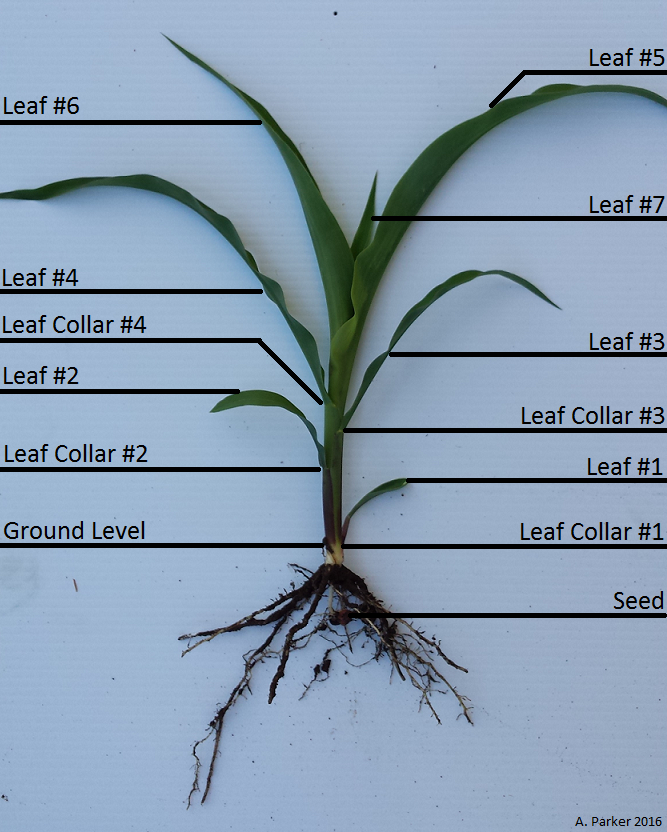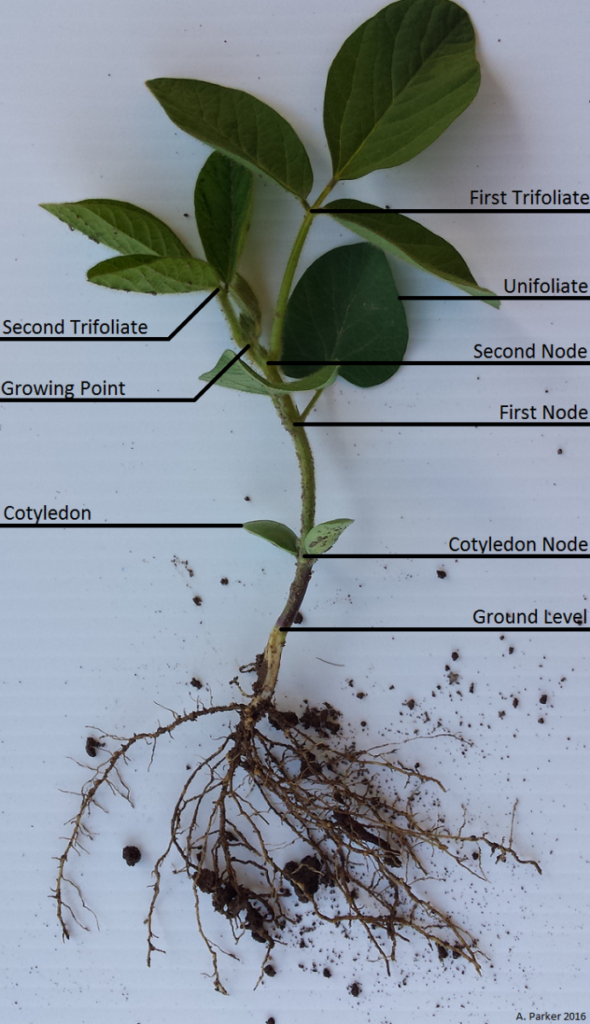Staging of Corn and Soybeans
June 9, 2016This time of year is very common for herbicide applications to be made in both corn and soybeans. While scouting and spraying your crops, it is important to properly identify the growth stage to avoid herbicide injury and maintain proper weed control. Below are a few tips to help you stage your crops over the next couple of weeks.
Corn Staging

There are three different methods for identifying corn staging:
Leaf Collar Method – this corn plant is the V4 stage, notice the 4 leaf collars in the picture.
Leaf Over Method – this plant has 5 leaves that hang over, notice the leaf tip of the 6th leaf is still the highest point, rather than the middle of the leaf. We would call this ‘5 leaf over’ corn.
Leaf Tip Method – You can also see the 7th leaf tip emerging from the whorl. You can call this 7 leaf tip corn.
Suggestions for the Field
- The first true leaf may not be visible as the plant matures. It is important to include this leaf and its leaf collar while staging corn as you get later in maturity. Note: the first leaf has a round leaf tip.
- Planting depth can also be estimated by measuring the length between the seed and the ground level where the colour changes on the stalk.
- It takes approximately 75 CHU for a corn plant to produce a new leaf. Given this time of year, a corn plant can produce a new leaf every 3 days or less. This can help you schedule when you need to spray.
- Why is this important? When spraying your crops, chemical labels may provide guidelines to adhere to while using the product. It is critical that some herbicides not be applied beyond the recommended stages to prevent crop injury. In OMAFRA Publication 75 for example, the guidelines are based off of the ‘leaf over’ staging for corn. This guide can help you to better identify the growth stages of you crops and reduce the risk of harming your crop.

Soybean Staging

Suggestions for the Field
- This soybean plant is at the V2 stage, also known as the 2nd trifoliate stage. Note the leaf margins of the second trifoliate are no longer touching.
- At this stage of the plant’s growth, a soybean plant can develop a new trifoliate every 5 days.
- When applying Group 2 herbicides (Reflex®, Flexstar®, Blazer® and Basagran® Forté), application should be prior to flowering. Application of these herbicides during flowering can result in flower and pod abortion.
- Publication 75 uses the Trifoliate counting method to stage soybeans. By counting the number of fully expanded trifoliates, you can easily identify the crop stage.

Adam Parker, CCA-ON
Maizex Seeds Territory Manager, Grey, Wellington & Simcoe Counties
Like what you’re reading? Sign up to receive weekly agronomy updates from Greg Stewart and the Maizex Agronomy Team right to your inbox! CLICK HERE
